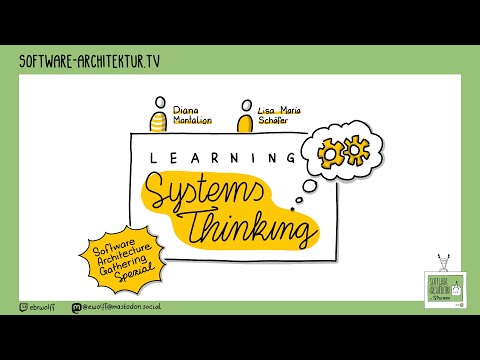· Featured · 4 min read
Nonlinear Thinking
Exploring nonlinear thinking and approaches from experienced systems thinkers working inside, and outside, technology.

“The true system, the real system, is our present construction of systematic thought itself, rationality itself, and if a factory is torn down but the rationality which produced it is left standing, then that rationality will simply produce another factory. If a revolution destroys a government, but the systematic patterns of thought that produced that government are left intact, then those patterns will repeat themselves… . There’s so much talk about the system. And so little understanding.”
— Robert M Pirsig, Zen and the Art of Motorcycle MaintenanceSource
40 years ago, we searched for an apartment, or the job to pay for it, in a newspaper. Information lived at the local library. We mailed letters, we waited for phone calls. On Wednesday night at precisely 8pm, we watched our favorite show. On Saturdays, we went to the movies.
A vast digital landscape of software has replaced newspapers and libraries and postal mail and real-time entertainment. Movies play anywhere, anytime. Magazines publish content everywhere. A local store is a global distributor. Our social circle is (potentially) everyone.
Linear thinking is primarily what we’ve been taught and what we usually mean by “thinking”. Linear approaches are enshrined in the business world: rational, top down, procedural, predictable and concerned with control. There, we are valued for what we know — like passing whiteboard tests.
Nonlinear thinking is systems thinking. The challenge with “systems thinking” is that phrase is defined differently across technology, business and academia. Strategic thinking is nonlinear thinking within a specific context. Pattern thinking, parallel thinking and systemic reasoning are all nonlinear. Learning teams are nonlinear thinking teams.
Nonlinear thinking is necessarily concerned with relationships, between technology parts and between the people creating them. Nonlinear approaches value how well we learn, how ably we adapt our thinking as circumstances change. Can you think well with others and solve a complex problem you’ve never seen before? This is the heart of knowledge work.
We are knowledge workers, increasingly immersed in systems, struggling to form an emergent whole from all our disparate parts. Yet, few of us have been taught, or encouraged, to think systemically.
We are also blocked by two obstacles:
- We are spectacularly terrible at nonlinear thinking. We are constantly tangled in our opinions, cognitive biases, fears, assumptions, reactions, conditioning and logical fallacies. They seem real and true to us.
- We don’t know that we are terrible at it. In fact, the worse we are at nonlinear thinking, the more certain we are that we are good at it!
There are no “Ten Steps to Nonlinear Thinking (and the first one will surprise you!)”. We will explore topics from an overlapping system of practices. Practices that help us rethink how we understand ourselves, and how we learn, communicate, and collaborate with others. Some are directly relevant to technology architecture, some expand our definition of that skillset.
These resources are good places to begin. By reading, watching, listening and learning your mind will begin to shift. But don’t simply observe! Try something different in your daily life … see what happens.
That’s the nonlinear way.
The Fifth Discipline: The Art & Practice of the Learning Organization
by Peter M. Senge
Peter Senge describes learning organizations as “…organizations where people continually expand their capacity to create the results they truly desire, where new and expansive patterns of thinking are nurtured …”. These five disciplines are foundational practices for nonlinear thinking – and for people who do knowledge work.
A Talk About Systems Thinking
“The reason for the failures is primarily the fact that they have not been embedded in systems thinking. They have been anti-systemic applications.”
— Russel Ackoff
There is no exploration of systems thinking without, at some point, quoting Russel Ackoff. He was born in 1919, died in 2009, so this video is “old” by our current production standards. But what he’s saying is no less relevant. An article to read, if you prefer.
Software Architektur im Stream E137: Nonlinear Thinking
“We are used to linear thinking - but really nonlinear thinking and systems thinking is what helps in a lot of modern challenges around software architecture. Diana Montalion is an expert on these subjects and applies them to software architecture regularly. She will tell us how nonlinear thinking helps with software architecture and why it is important.”
— Eberhard Wolff, stream host
Argumentation: The Study of Effective Reasoning
taught by David Zarefsky, PhD
Argumentation is systemic reasoning: making a case for the best possible recommendation, even when you can’t be certain. (You can never be certain.) Through argumentation, we craft choice, alone and with others. These skills can significantly improve your day-to-day work.
It’s currently full price on The Great Courses, but is often on sale. The course is available for much less on Audible.



